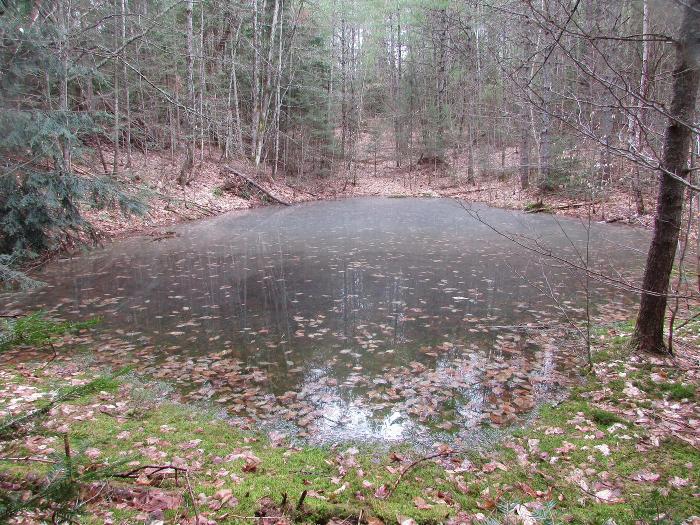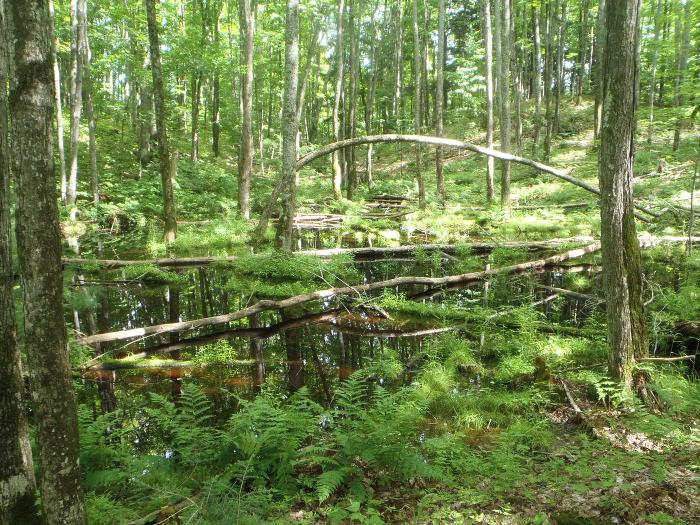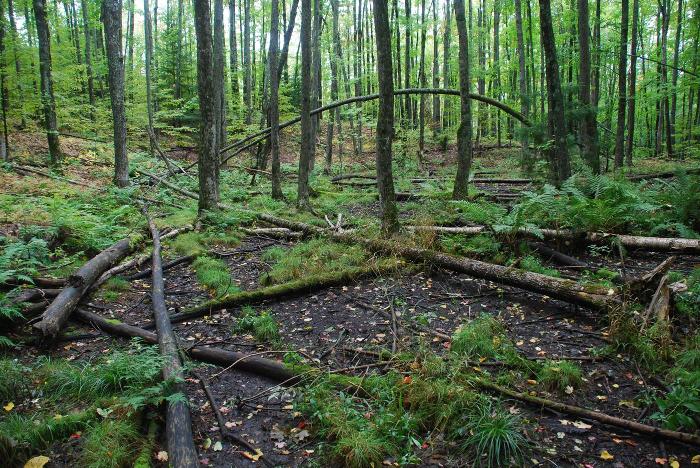Hydrology
Vernal pools are seasonally flooded. They typically fill with water in the spring or fall, and dry during the summer or early fall. Vernal pools primarily fill with water from rainfall and snowmelt, but they also can receive water from surface runoff, groundwater, intermittent streams, and/or overbank flooding from nearby waterbodies (e.g., rivers and lakes).
The length of time that pools stay flooded or wet varies among pools and between years. Some vernal pools hold water for only two or three months while other pools can remain flooded for almost a year or over multiple years. Some vernal pools are semi-permanent and remain flooded for several years at a time, in some cases, drying only every five or ten years. By definition, vernal pools have to hold water for at least two months in the spring during most years. This allows species that breed in vernal pools and depend on them for their survival to fully develop and complete their life cycle. During wet years, pools may stay flooded longer than usual, and during drought years, they may dry earlier. Some vernal pools dry up completely, while others may retain small areas of standing water.
Wet Pool. Photo: MNFI
Dry Pool. Photo: Michael Penskar



